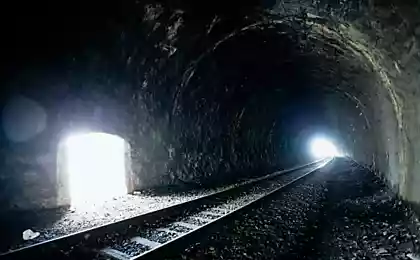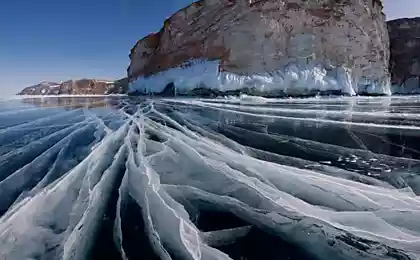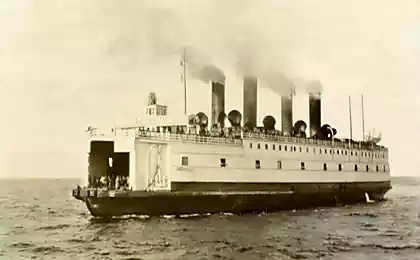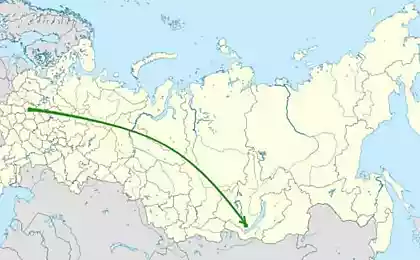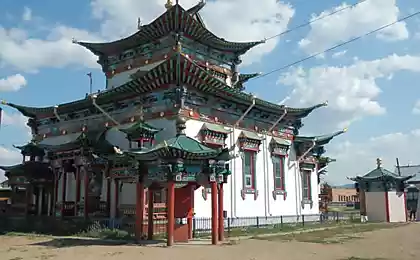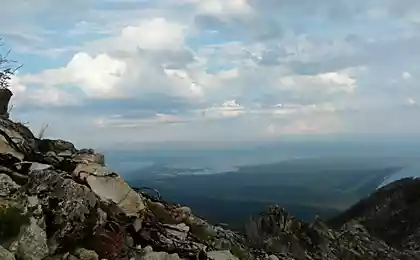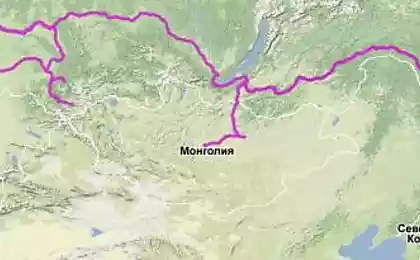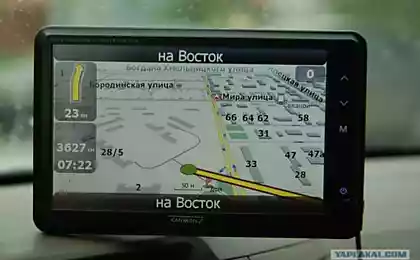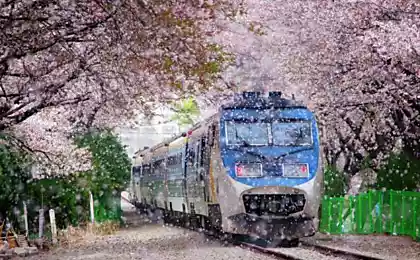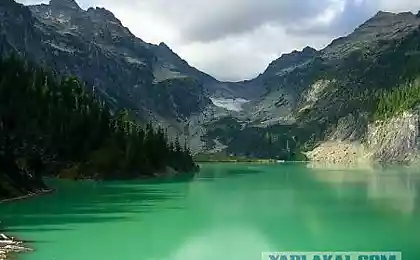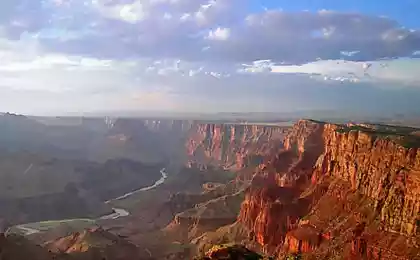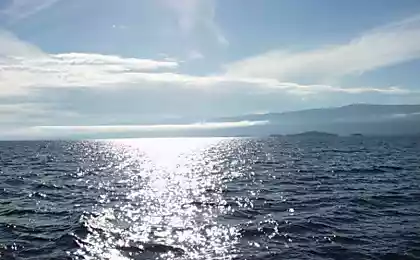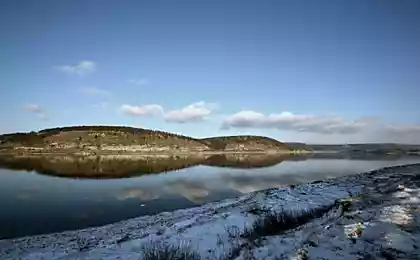917
Lake Baikal Circum-Baikal Railway
Circum-Baikal Railway - historical railway in the Irkutsk region in the past - part of the Trans-Siberian railway, a unique monument of engineering art, one of the most picturesque sights of the Baikal region. Runs along the northern coast of the southern tip of Lake Baikal from the city to the village of Lake Baikal Slyudyanka on the southern part of the plateau Olkhinskoye.
30 ph via photo_discovery
1. After commissioning the backup site Circum lost its former importance. Stretch of road from the station and sorting Irkutsk to Port Baikal, which took place on the left bank of the Angara, was dismantled in 1956 and completely flooded in 1958 after the construction of the Irkutsk hydroelectric station, in the process of filling the reservoir of Irkutsk.
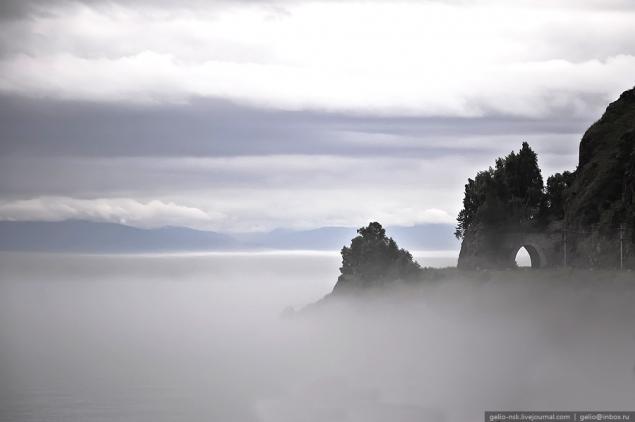
2. Siberian railway, later known as the Trans-Siberian Railway, the design was divided into seven sections, among which was the Circum-Baikal, the route of which was to be held from Irkutsk to the pier Mysovaya (now the city of Babushkin) on the eastern shore of Lake Baikal.
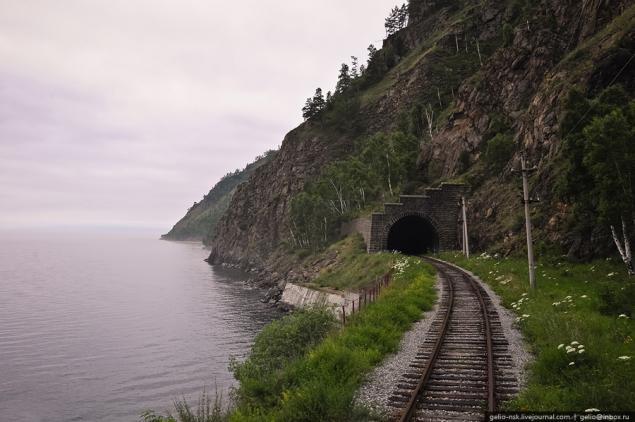
3. The initial survey work was carried out with the participation of AI Shtukenberg in 1836-1840 years. The final stage of work on the definition of the route of the first section of Circum-Baikal from Irkutsk to Lake Baikal was held in 1894.

4. A final decision on the passage of the route adopted by the Committee for the construction of the Siberian railway June 9, 1901. The estimated cost of construction of the section of Circum-Baikal railway was 52, 52 million rubles. Construction was appointed as Chief Engineer of Railways BU Savrimovich.
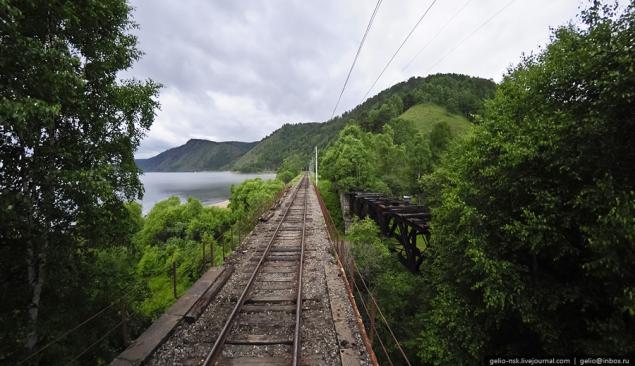
5. Beach, was a rocky ridge with steep slopes, towering over the water's edge at 270-400 m.
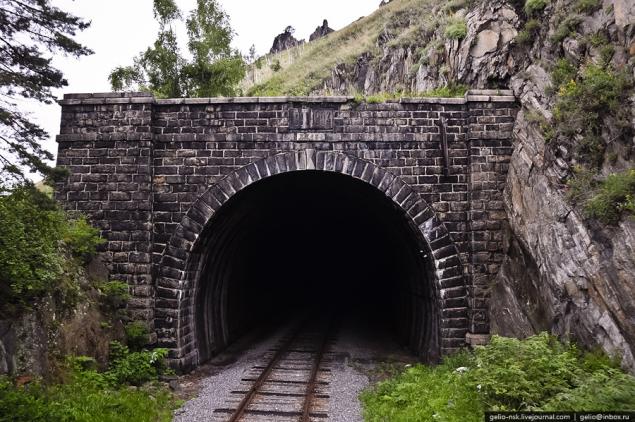
6. According to the original plan, the area from Slyudyanka to P.Baykala was necessary to build a tunnel 33.
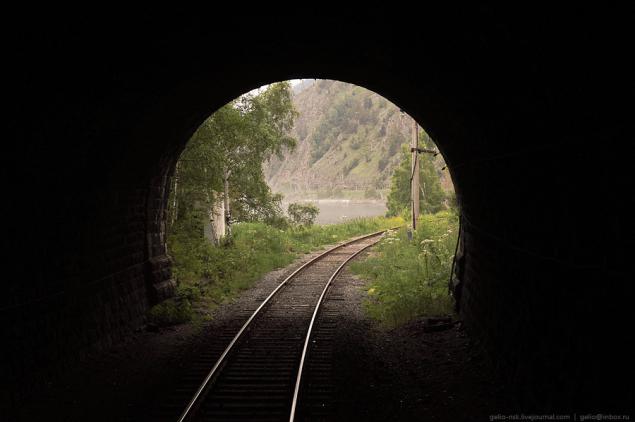
7. The minimum height proleganiya railroad tracks on the water's edge of Lake Baikal - 5, 33 m.
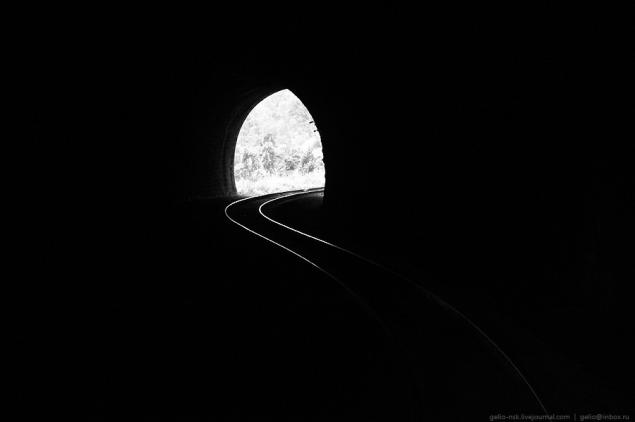
8. Technical conditions at the device trips determined the capacity of roads in the 14 pairs of trains a day
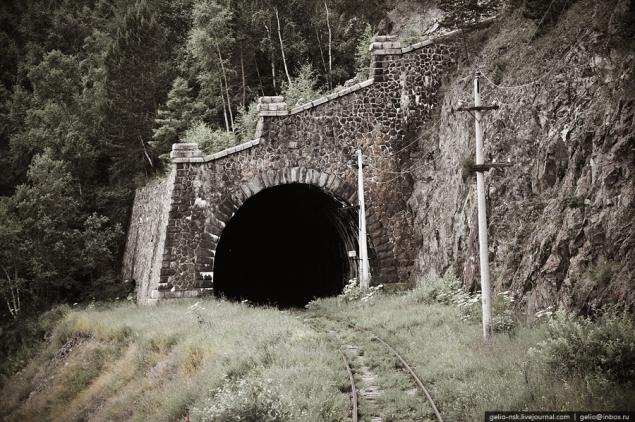
9. Due to the lack of coastal terraces delivery of all materials to the construction site (except stone, quarried locally) was carried out on the water (in the summer - on barges in the winter - in the course of horse-drawn ice). For each kilometer of road was spent on average about carriage of explosives.
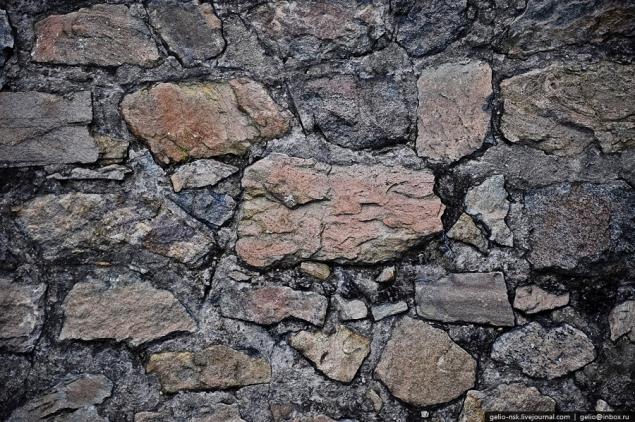
10. The commissioning of the entire track Circum-Baikal Transsib route around Baikal was completely closed on the highway went cargo carriages. Circum-Baikal railway was called the "Golden Buckle on the Steel Belt of Russia».
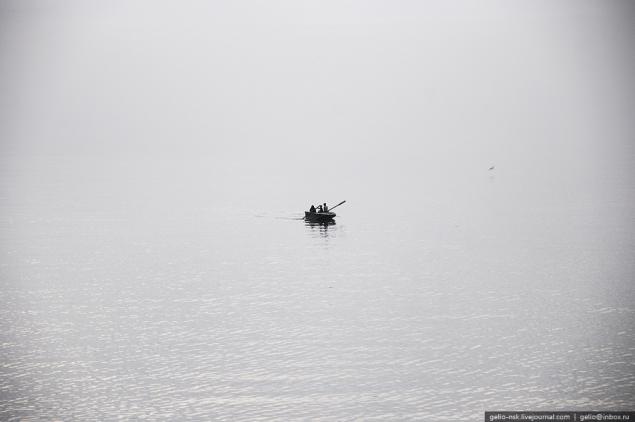
11. Initially, the road was built in one track; in 1911-1914 it was carried out work on the construction of the second track, which increased the capacity of Circum-Baikal up to 48 pairs of trains per day.
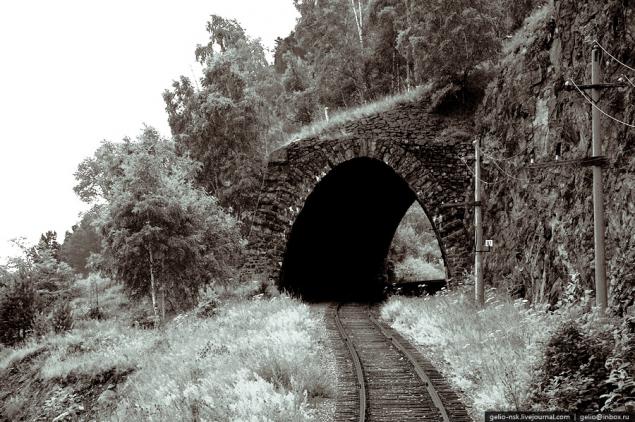
12. In this case, in the construction of bridges and other engineering structures instead of natural stone was actively used for those times new material - concrete.
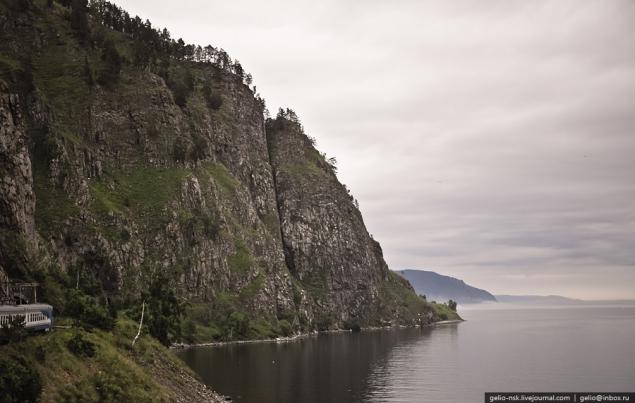
13. In 1947-1949 was built electrified the saddle road Irkutsk - Big Lug - Slyudyanka, significantly shorten the path compared to the Circum-Baikal branch. The main course of the Trans-Siberian Railway was transferred to a new site
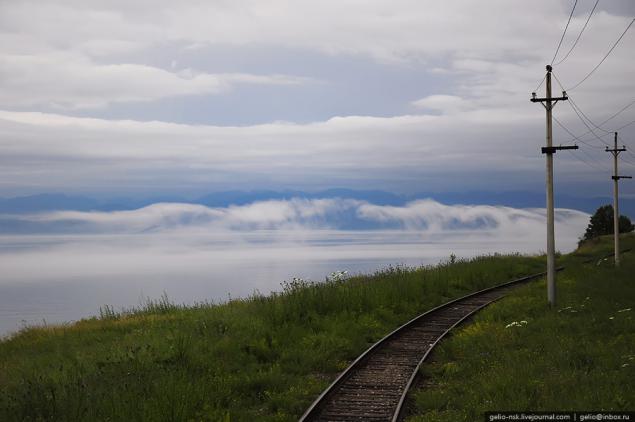
14. In 1950, the construction of the Irkutsk hydroelectric station. In connection with this part of the Circum-Baikal railway from Irkutsk to the village of Lake Baikal, runs along the Angara, was dismantled in 1956 and in the same year flooded during the filling of the reservoir of Irkutsk.
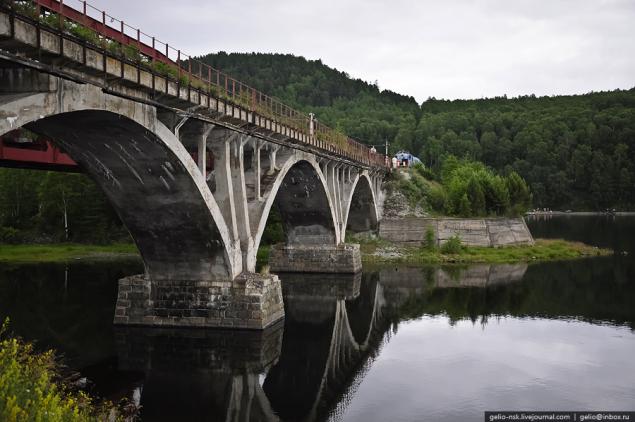
15. As a result, formed a modern, "dead-end" Circum-Baikal railway route (Slyudyanka-2 - Kultuk - Maritui - Baikal). The line lost its strategic importance, the number of pairs of trains on the road dropped sharply, with tunnels and bridges was disarming.
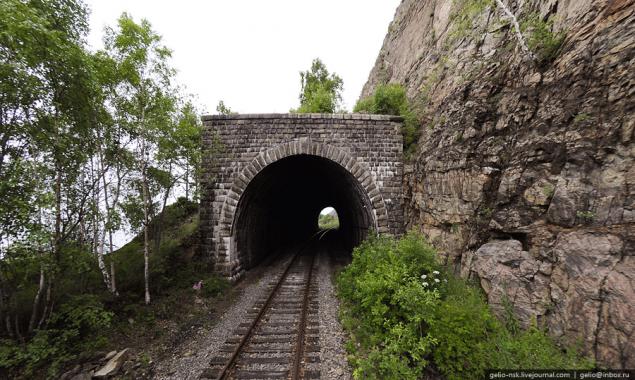
16. The Circum-Baikal Railway is called the branch length of 89 km.
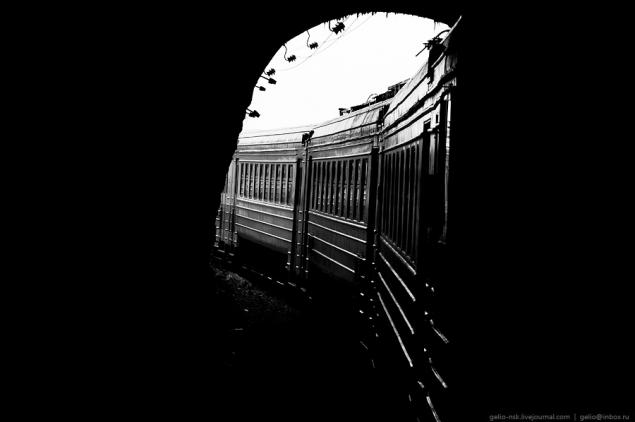
17. On the road, there are now four stations (Kultuk, Marit Ulanova and Baikal) and one crossing (137 km).
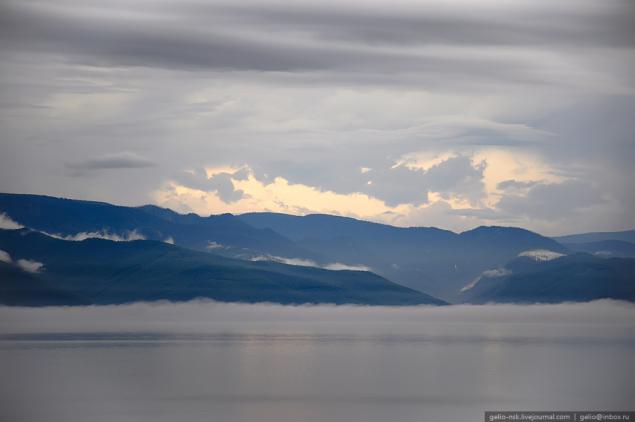
18. Circum used 38 tunnels with a total length of 9063 m (the longest of them - the tunnel via the Cape of half the length of 777, 5 m), 15 stone galleries with a total length 295 m 3 of concrete galleries with holes, 248 bridges and viaducts, retaining walls 268 .
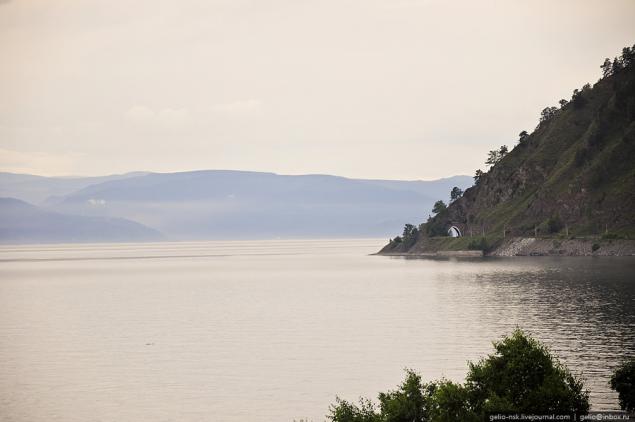
19. Saturation engineering structures Circum-Baikal has no equal in Russia and is one of the first places in the world.
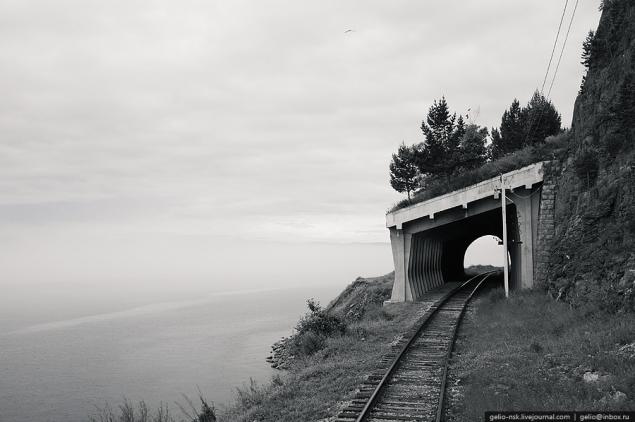
20. One of the main attractions - Italian wall
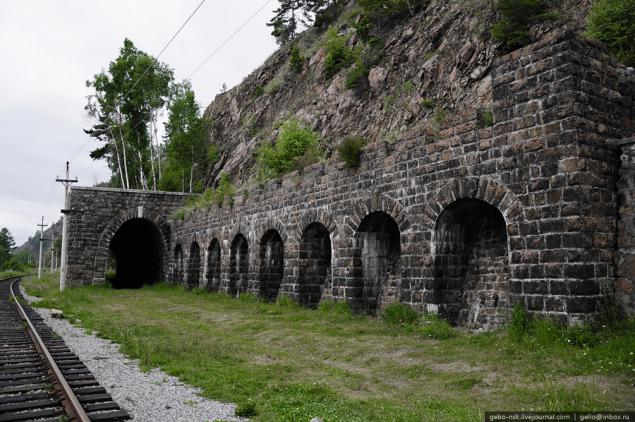
21. The counting of kilometers on the Circum-Baikal traditionally conducted from the station Irkutsk-sorting (former Innokentievskaya), which until 1934 was the administrative boundary Tomsk and Trans-Baikal Railway.
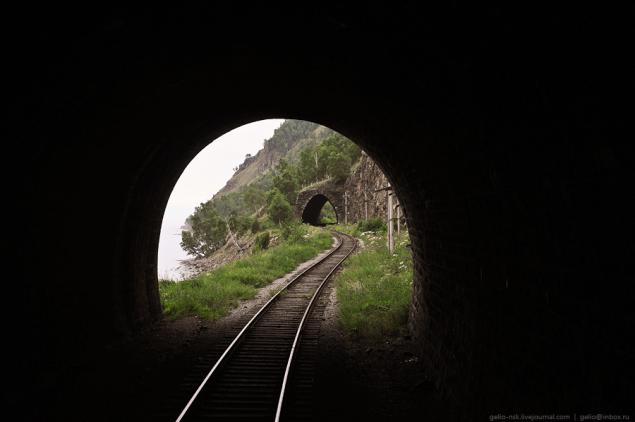
22. The station Baikal thus is located 72 kilometers from this point of reference, the station Slyudyanka-2 - 161 km.
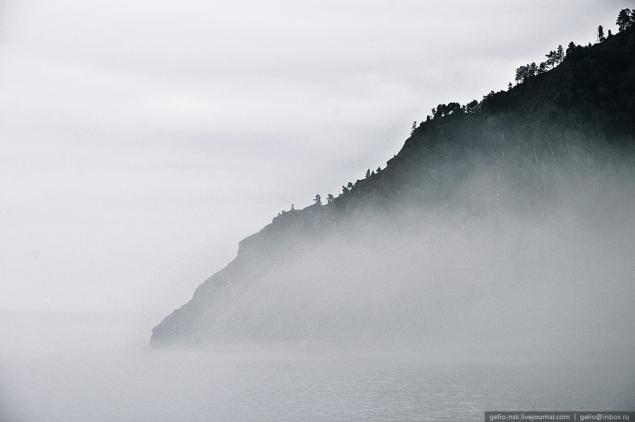
23. Currently, the Circum-Baikal Railway is a part of the Irkutsk branch of the East-Siberian railway.
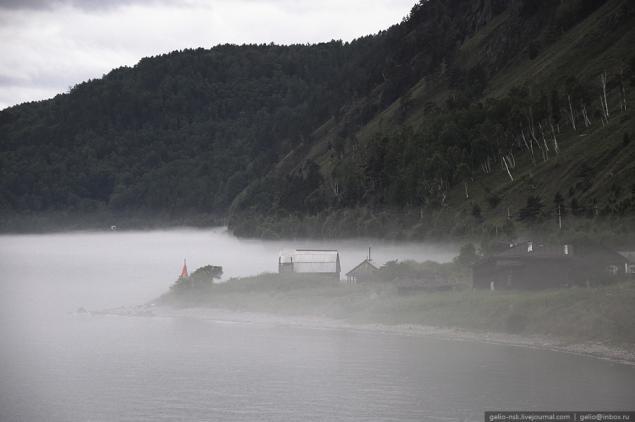
24.
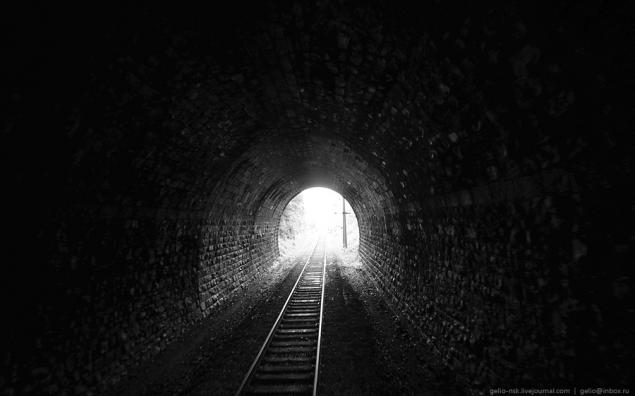
25. At the beginning of the XXI century the road regularly runs one train (locomotive and two carriages) per day back and forth. Travel time from Slyudyanka up to station Baikal - 4 hours 40 minutes. This train is called the inhabitants of the villages bordering the word "transfer", reflecting the importance of this transportation for their basic necessities. Another name of the train - "winding" (teeter between stations).
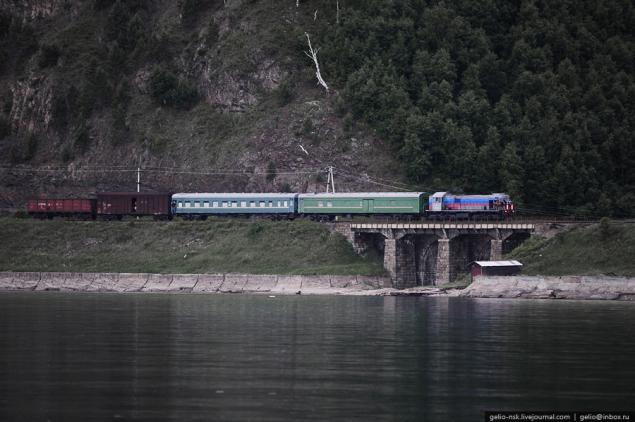
26. It is also periodically run tourist trains, including steam traction and wagons decorated in the style of "retro".
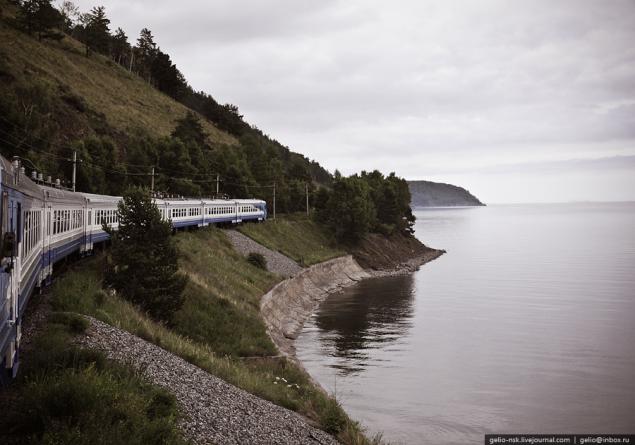
27.
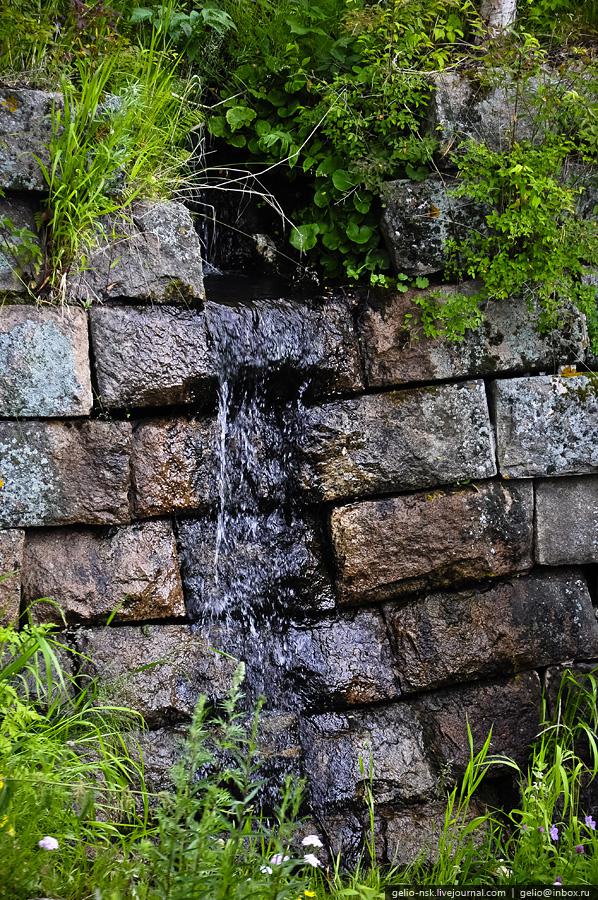
28. The driver's cab of the locomotive.
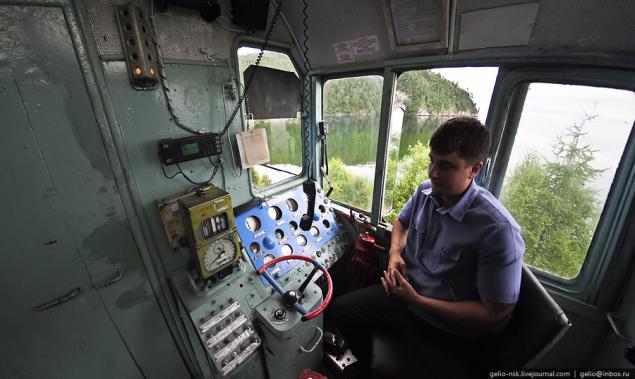
29. Tunnel №18 «Kirinrey 3" September 13, 1904 there was docked Great Siberian way.
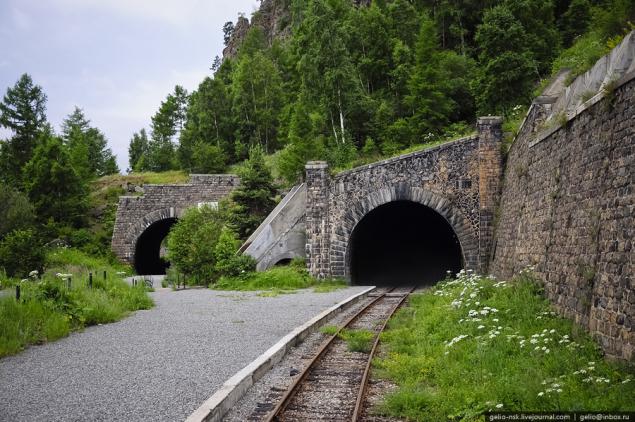
30. The largest and deepest lake on the planet Earth. Baikal is unique ...
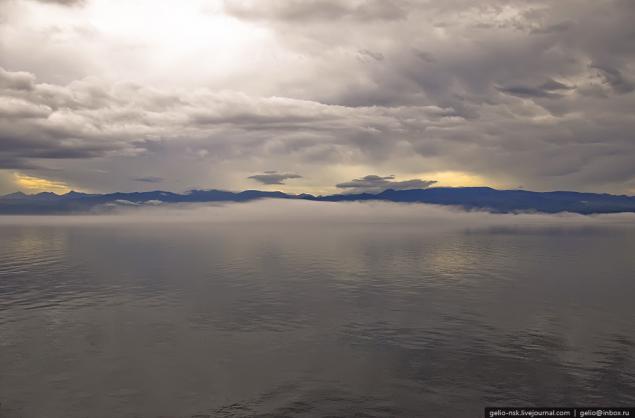
Source:
30 ph via photo_discovery
1. After commissioning the backup site Circum lost its former importance. Stretch of road from the station and sorting Irkutsk to Port Baikal, which took place on the left bank of the Angara, was dismantled in 1956 and completely flooded in 1958 after the construction of the Irkutsk hydroelectric station, in the process of filling the reservoir of Irkutsk.

2. Siberian railway, later known as the Trans-Siberian Railway, the design was divided into seven sections, among which was the Circum-Baikal, the route of which was to be held from Irkutsk to the pier Mysovaya (now the city of Babushkin) on the eastern shore of Lake Baikal.

3. The initial survey work was carried out with the participation of AI Shtukenberg in 1836-1840 years. The final stage of work on the definition of the route of the first section of Circum-Baikal from Irkutsk to Lake Baikal was held in 1894.

4. A final decision on the passage of the route adopted by the Committee for the construction of the Siberian railway June 9, 1901. The estimated cost of construction of the section of Circum-Baikal railway was 52, 52 million rubles. Construction was appointed as Chief Engineer of Railways BU Savrimovich.

5. Beach, was a rocky ridge with steep slopes, towering over the water's edge at 270-400 m.

6. According to the original plan, the area from Slyudyanka to P.Baykala was necessary to build a tunnel 33.

7. The minimum height proleganiya railroad tracks on the water's edge of Lake Baikal - 5, 33 m.

8. Technical conditions at the device trips determined the capacity of roads in the 14 pairs of trains a day

9. Due to the lack of coastal terraces delivery of all materials to the construction site (except stone, quarried locally) was carried out on the water (in the summer - on barges in the winter - in the course of horse-drawn ice). For each kilometer of road was spent on average about carriage of explosives.

10. The commissioning of the entire track Circum-Baikal Transsib route around Baikal was completely closed on the highway went cargo carriages. Circum-Baikal railway was called the "Golden Buckle on the Steel Belt of Russia».

11. Initially, the road was built in one track; in 1911-1914 it was carried out work on the construction of the second track, which increased the capacity of Circum-Baikal up to 48 pairs of trains per day.

12. In this case, in the construction of bridges and other engineering structures instead of natural stone was actively used for those times new material - concrete.

13. In 1947-1949 was built electrified the saddle road Irkutsk - Big Lug - Slyudyanka, significantly shorten the path compared to the Circum-Baikal branch. The main course of the Trans-Siberian Railway was transferred to a new site

14. In 1950, the construction of the Irkutsk hydroelectric station. In connection with this part of the Circum-Baikal railway from Irkutsk to the village of Lake Baikal, runs along the Angara, was dismantled in 1956 and in the same year flooded during the filling of the reservoir of Irkutsk.

15. As a result, formed a modern, "dead-end" Circum-Baikal railway route (Slyudyanka-2 - Kultuk - Maritui - Baikal). The line lost its strategic importance, the number of pairs of trains on the road dropped sharply, with tunnels and bridges was disarming.

16. The Circum-Baikal Railway is called the branch length of 89 km.

17. On the road, there are now four stations (Kultuk, Marit Ulanova and Baikal) and one crossing (137 km).

18. Circum used 38 tunnels with a total length of 9063 m (the longest of them - the tunnel via the Cape of half the length of 777, 5 m), 15 stone galleries with a total length 295 m 3 of concrete galleries with holes, 248 bridges and viaducts, retaining walls 268 .

19. Saturation engineering structures Circum-Baikal has no equal in Russia and is one of the first places in the world.

20. One of the main attractions - Italian wall

21. The counting of kilometers on the Circum-Baikal traditionally conducted from the station Irkutsk-sorting (former Innokentievskaya), which until 1934 was the administrative boundary Tomsk and Trans-Baikal Railway.

22. The station Baikal thus is located 72 kilometers from this point of reference, the station Slyudyanka-2 - 161 km.

23. Currently, the Circum-Baikal Railway is a part of the Irkutsk branch of the East-Siberian railway.

24.

25. At the beginning of the XXI century the road regularly runs one train (locomotive and two carriages) per day back and forth. Travel time from Slyudyanka up to station Baikal - 4 hours 40 minutes. This train is called the inhabitants of the villages bordering the word "transfer", reflecting the importance of this transportation for their basic necessities. Another name of the train - "winding" (teeter between stations).

26. It is also periodically run tourist trains, including steam traction and wagons decorated in the style of "retro".

27.

28. The driver's cab of the locomotive.

29. Tunnel №18 «Kirinrey 3" September 13, 1904 there was docked Great Siberian way.

30. The largest and deepest lake on the planet Earth. Baikal is unique ...

Source:

